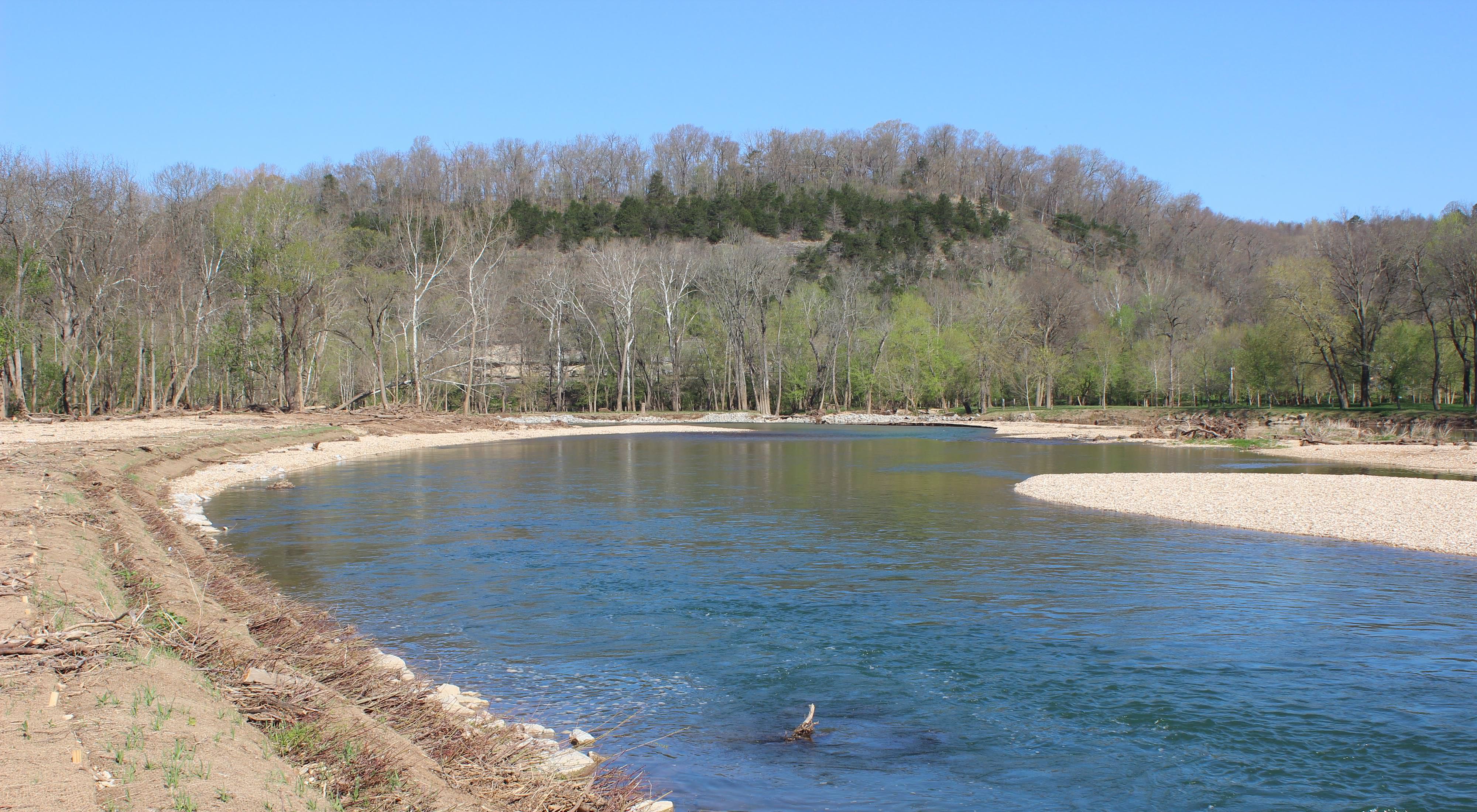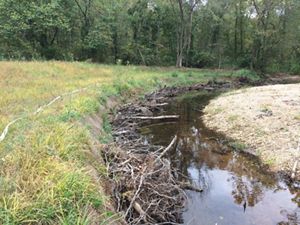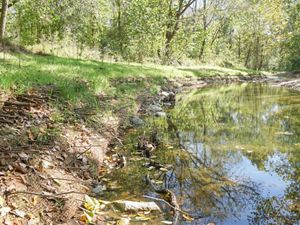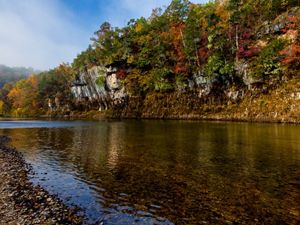Quote: Dr. Steve Herrington
Beyond the benefits to the Elk River, this restoration hopes to advance learning about streambank restoration practices throughout the state and beyond.
Imagine standing at the edge of your property and literally watching it wash away. That is the reality for many landowners—not only in Missouri but across the country.
In McDonald County, on a stretch of the scenic Elk River sits a property that has lost an astonishing 8,000 tons of soil annually. “We are losing a lot of land every time it floods,” said the landowner. “If something isn’t done, the river will take most all of my land along with that of my neighbors.” Overall, he has lost an area of about seven acres in size and ten feet deep from his property.
Beyond the loss of land, eroding streambanks are among the biggest threats to our rivers and streams. These lost soils flush into the river systems, carrying excessive nutrients, damaging recreational assets, placing increased stress on downstream infrastructure, and diminishing the aquatic habitat that many freshwater species rely upon.
“While erosion and deposition of sediment is part of the natural dynamics of healthy streams, severe bank erosion is a widespread problem in many Ozark waters due to upstream development,” according to Drew Holt, the Conservancy’s Western Ozark Waters Coordinator. Addressing excessive streambank erosion is part of a healthy watershed approach promoted by the Conservancy’s Western Ozark Waters Initiative since its launch in 2015.
Working with the Department of Natural Resources and the statewide Soil and Water Conservation Program, the Conservancy applied innovative bioengineering techniques to the 1,600 feet of eroding streambank to not only stabilize continued erosion but also to improve habitat for fish and wildlife and downstream recreation.
In addition to the investment from the Conservancy, the landowners, and the involved partners, a portion of project funds came from the support of Tyson Foods. Since 2015, Tyson Foods has supported The Nature Conservancy to advance water quality efforts on the Buffalo River and Kings River in Northwest Arkansas and the Elk River and Spring River in Southwest Missouri.
Natural State Streams, LLC was hired as the contractor on the project. "It’s great to see natural channel design principals applied and constructed on such a large scale. We’ve moved over 40,000 cubic yards of gravel and installed 6,000 tons of rock and over 120 large hardwood trees with root wads during construction to restore and protect this streambank. After years of planning it’s exciting to see everything come together,” says Josh Duzan, Project Manager with Natural State Streams, LLC.
The Risks
Tackling a project of this scale has the inherent risk of setbacks and even continued bank failure after construction. The Nature Conservancy and partners hired a highly experienced engineering firm for complete design-build services for the project to maximize the opportunity for success. In addition, a plan and commitment for long-term maintenance and repair are in place. This engineering grade, bioengineered streambank stabilization project on the site represents the best chance for long-term success in stabilizing the stream section and protecting a natural asset for the community.

Demonstrating Nature as a Solution
Beyond the benefits to the Elk River, this restoration hopes to advance learning about streambank restoration practices throughout the state and beyond, particularly within various cost-share programs—transforming how we manage our streams for people and nature. The Conservancy will use this site to host demonstration field days for community leaders, private landowners, and other stakeholders to view the streambank project and to discuss the nature-based methods used and how they can be applied elsewhere.
Additionally, a similar streambank restoration demonstration project was recently completed on LaBarque Creek, located just outside of St. Louis, in partnership with Washington University's Tyson Research Center. Both projects will be used to advance learning about science-based streambank restoration options and help to transform the way our rivers and streams are managed.



